There is no shortage of beloved characters in the Half-Life series, between Gordon Freeman, Alyx Vance, Eli Vance, the mysterious G-Man, Doctor Kleiner and his pet headcrab Lamarr, Barney “About that beer I owe ya” Calhoun and even newer characters like the ever-talking Russell.
However, one of the more surprisingly long-lasting fan-favorites is the silent protagonist of one of the earlier entries in the series, Half-Life: Opposing Force‘s Adrian Shephard. This gas mask-clad grunt stars in the first ever expansion to the original Half-Life—and the first Half-Life game not developed by Valve, being helmed by a then-brand new studio, Gearbox Software, best known for the Borderlands series—, his one and so far only official appearance, which hasn’t stopped him from becoming perhaps the favorite playable character in the series this side from Gordon Freeman and Alyx Vance, although even the latter is arguable.
What is it that makes the good Shephard so enduring in the minds of Half-Life fans? What do we actually know about this character? And, to touch on a sensitive subject, can he even be considered… “canon”? These, and more, are the questions we’ll be discussing in this article, so grab your gear, soldier, and follow us into the deep hole that is the curious case of Adrian Shephard.
Who is Adrian Shephard?
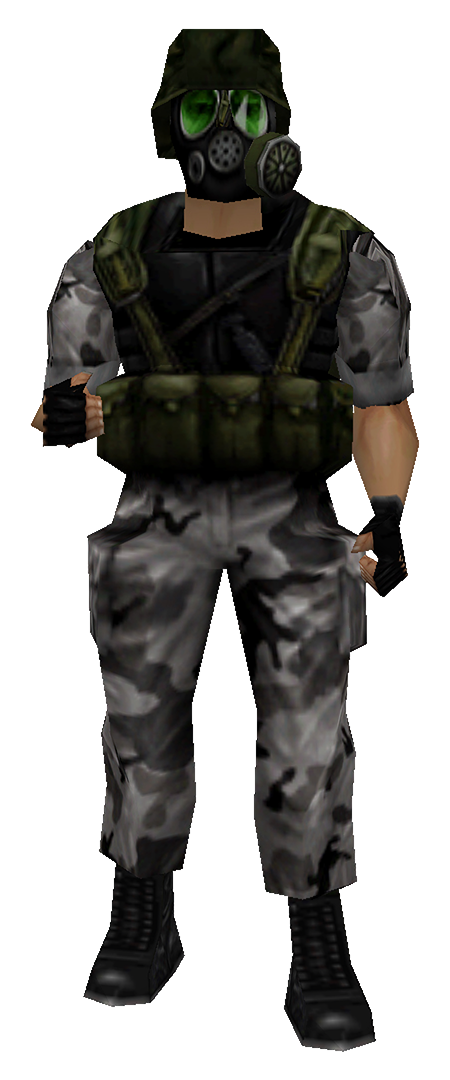
Corporal Adrian Shephard is a 22-year-old United States Marine who, at the time immediately prior to the Black Mesa Incident, is stationed at the Santego Military Base in Arizona as part of the Hazardous Environment Combat Unit, or HECU. As such, he is part of the same unit that is sent to clean up the Black Mesa Research Facility—including its inhabitants—in the first Half-Life, but, in what was then a twist, he is actually the protagonist of the first expansion pack to the game, rather than an antagonist.
In Opposing Force, the player takes control of Adrian Shephard from his Advanced Training at the Santego Military Base, which serves the same purpose as a tutorial as the Hazard Course in the original game, up until the end of the notorious incident at Black Mesa—notably, Adrian Shephard actually got to see events after the ending of Half-Life and the death of the Nihilanth, including a first-hand account of the obliteration of Black Mesa itself at the end of the expansion.
Whereas other grunts in the original game are portrayed as almost bloodthirsty murderers and sadists or, at best, vengeful vigilantes looking to reciprocate Gordon Freeman killing their buddies, Shephard doesn’t show any in-character predisposition to save or kill the scientists at Black Mesa. In fact, as events in the game unfold, Shephard is very much caught in the same situation as any other survivor at first and never gets the order to kill the survivors on sight, only later in the game catching up with his comrades. The game never explicitly forces the player, as Shephard, to eliminate fellow survivors in order to silence them, although, with the early Half-Life games giving the player an enormous amount of freedom in guiding or just plain killing the non-playable characters, you can very well play Shephard as a dutiful serial murderer, if you want to.
During the events of Opposing Force, Shephard is faced with not only the rabid Xen fauna and the enslaved forces of the Nihilanth, but also his fellow humans in the form of another military faction, the enigmatic Black Ops sent to clean in after the HECU once the latter is overwhelmed, and a second race of alien invaders that seemingly took advantage of the gap left open in the Black Mesa Incident, referred to only as “Race X”.
Ultimately, as events in the game unfold, Shephard follows Gordon Freeman—quite literally—into Xen, then eventually returns to Black Mesa only to discover the Black Ops’ plan to nuke the facility entirely. Shephard is initially successful in stopping their plan, but a fateful intervention by the omnipresent figure of the Incident, the G-Man, makes his efforts ultimately futile.
After fighting and killing an enormous Tentacle-like monstrosity known as the Gene Worm, Adrian Shephard is, much like Gordon Freeman before him, picked up by the G-Man, who compares Shephard’s survival instincts to his own and shows him the final destruction of Black Mesa before detaining him to avoid Shepard speaking further of the Black Mesa Incident. That marks the end of Corporal Shephard’s appearances in official Half-Life games so far.
Shephard’s diary
The Opposing Force manual sheds some more light into Shephard’s thoughts and the events immediately preceding the start of the game, as it included a series of entries from his diary:
March 3rd
Another typically hellish day at base camp. . . I’ll be glad when this is over and I can get assigned a mission. There has been this really weird civie spotted at the base. Rumor is he’s from some government branch looking to recruit; others say he’s with some secret research group. I would jump at the chance to join. It would be cool just for the change and the adventure.
March 7th
I finally saw the government guy today. I’m not sure he is a g-man, but he was wearing a really uptight suit and carrying a briefcase. He looked more like a lawyer or insurance agent to me. I did notice him checking me out. Several times throughout the day I spotted him just watching me during training. I wonder what he’s up to . . .
The first two entries are clear alusions to the G-Man, who can be seen in the “Boot Camp” training level watching Shephard from the top of the administrative building at the base. It’s worth pointing out that, at this point in time, the G-Man was meant to be the Administrator of the Black Mesa Research Facility (a position later retconned as Doctor Breen’s in Half-Life 2), hence the mention of him being with “some secret research group”. Shephard’s youthful impatience is also on full display on the first entry, with him eager to get through base camp and go on missions.
March 9th
For weeks our drills have been the same crap day after day. Today we assemble for the morning run and our drill instructor tells us we have one week to become experts at indoor strategic combat. We will be spending every day this week at the combat simulation facility. As far as I know this is a specialized training not taught in boot camp. What I want to know is if this is to test our ability to adapt or if we are being readied for a specific mission? Time will tell . . .
March 12th
The rumors have been flying since our indoor combat training began. Most of my peers are convinced that we are being primed for a mission. No one can agree on what the mission is. I have heard the name Black Mesa Facility thrown around a lot, but I have no information about the place. The rumors are that some top-secret research is going on there. Doesn’t sound too exciting to me . . .
The next two entries make it clear that not only is the Hazardous Environment Combat Unit being trained specifically for a mission, but also that the mission was already set to be at Black Mesa… a full week before the actual resonance cascade. Shephard isn’t too interested at this point, however, feeling that it’s not exciting enough.
March 15th
The rumor has been confirmed. We are being trained for a mission at the Black Mesa Facility. All I know is that the place is being used by scientists who are doing some kind of new research. I can’t imagine what we would be needed for[.] We were told today to be ready in case it happens tomorrow. I don’t know what “it” is, but the whole things is a little strange. I kind of hope it doesn’t happen; the mission doesn’t seem to have much excitement potential. I’d rather hold out for something with more likelihood of combat.
A day before the actual Black Mesa Incident, Shephard gets confirmation of their impending mission. It seems pretty clear that the G-Man was pulling the strings in order to bring the HECU to Black Mesa, with Shephard along for the ride. Shephard’s personality is also cemented a bit more, with him being eager for combat and excitement, but feeling like the mission won’t be too interesting, a sentiment shared by his comrades at the start of Opposing Force.
The current status of Adrian Shephard in the Half-Life universe
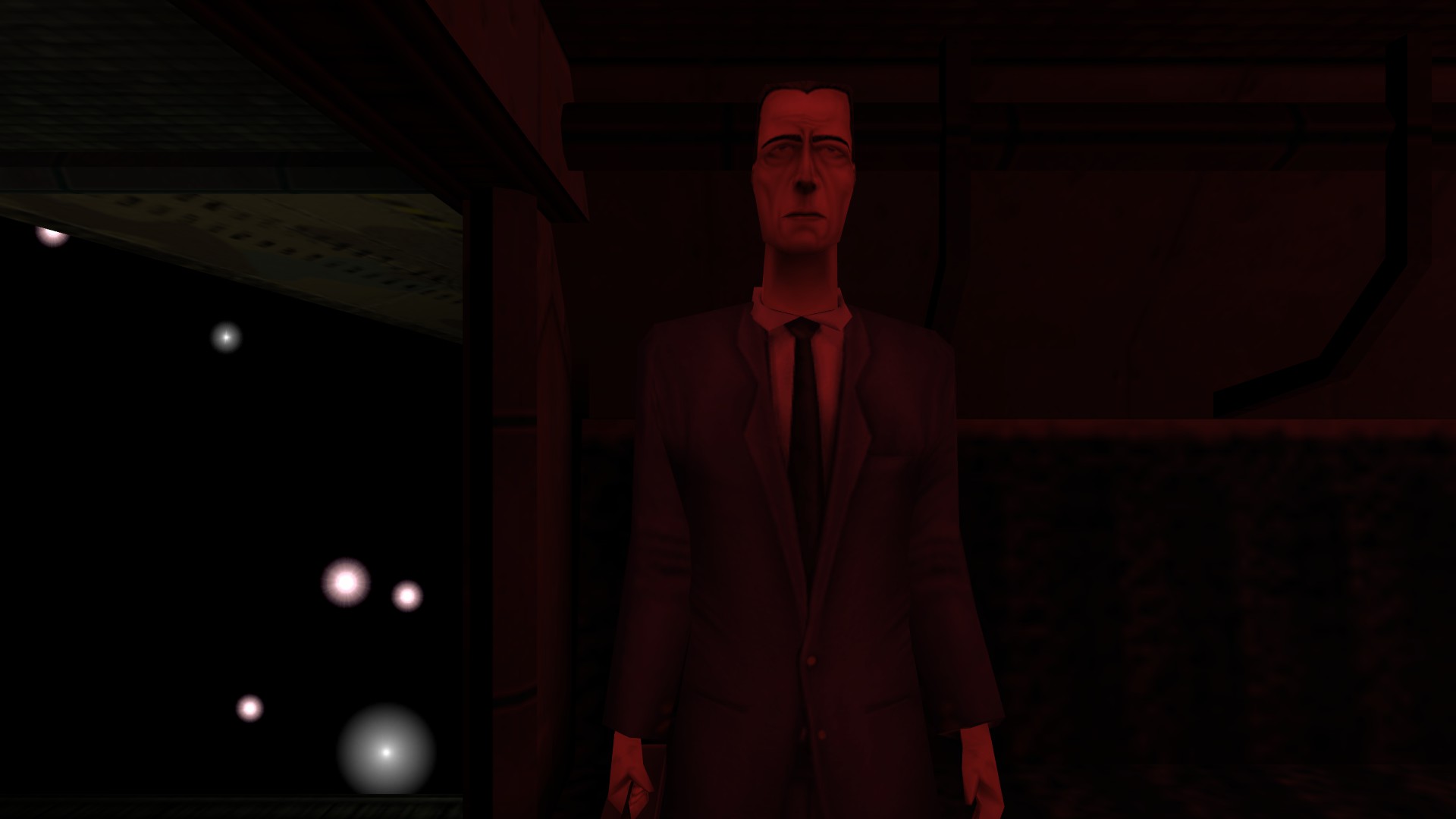
As mentioned, Corporal Shephard’s last appearance is at the end of Opposing Force, when the G-Man leaves him stranded aboard an Osprey flying indefinitely in a void.
While some fans argue that Shephard is an “employee” of the G-Man much like Gordon Freeman in Half-Life 2, it’s worth noting the choice of wording in the ending of Opposing Force. Specifically, the G-Man mentions that his employers have allowed him to “preserve [Shephard] for a time“, where he “can do no possible harm, and where no harm can come to [him].”
That, plus the fact that the ending message clearly states that Shephard is “detained” pending further evaluation, makes his case quite different from Freeman’s, who was (in the canon ending to Half-Life, at least) “hired” and awaited assignment.
The G-Man’s words also indicate that Shephard’s preservation may not last, as the intention was to silence him to avoid word of Black Mesa leaking to the public. Considering that Black Mesa soon becomes a public incident after the portal storms and the subsequent invasion by the Combine, the G-Man has no further need to keep Shephard contained by that point. Whether he might ultimately get rid of Adrian or let him live is debatable, although the G-Man makes it clear that he has a fondness for the Corporal, and he could easily have let him die at Black Mesa or killed him outright if all he wanted was to keep him quiet.
All that said, when one considers the status of Opposing Force in the Half-Life universe as a whole, Shephard’s very existence becomes a bit of a dicey topic. Which brings us to…
Is Adrian Shephard still canon?
Half-Life: Opposing Force occupies a weird place in the Half-Life series.
For one thing, it’s one of two expansions, not counting the PS2-exclusive Half-Life: Decay, that were not developed internally by Valve. The developers at Gearbox were guided by Half-Life’s writer Marc Laidlaw in terms of storytelling but they still took their own liberties with the nascent license, such as creating a whole race of new enemies unrelated to Xen, the aforementioned Race X.
For another, said additions are like a square peg trying to fit into a round hole in the storyline of Half-Life 2 onwards. Not only is there no trace of Race X, but the rest of the series heavily implies that the only other thing to come through the portal storms besides Xen aliens were the Combine, whose happenstance of getting through was presumably a lucky shot or planned by the G-Man. The only other element that could have importance for the future of the Half-Life series—the nuclear destruction of the Black Mesa facility—is never mentioned again in the series; in fact, Black Mesa is actually seen, seemingly intact, in a G-Man vision during Episode Two, although, given the bureaucrat’s seeming omnipotence and temporal omnipresence, that’s not saying much either way.
The subject of canon itself—meaning, an official continuity maintained by the authors—is a bit of a moot point for the Half-Life series. At least at the time Marc Laidlaw was guiding the Half-Life series at Valve, he made a point to state that there was no official stance on the Half-Life series’ continuity. The series itself has no shortage of retcons and changed plans, like the G-Man’s role in the series, the character of Doctor Eli Vance being retroactively fitted into Half-Life and so on.
In an e-mail response to a fan, Marc Laidlaw said the following regarding Shephard’s canon status:
Adrian Shepard[sic] is a bit like Schrodinger’s cat: he’s neither canon nor non-canon, depending on whether or not the G-Man may or may not have a use for him.
Further complicating things, the ending of Half-Life: Alyx, without veering too hard into spoiler territory, further muddies the waters. If Shephard was indeed around to serve as a replacement for Gordon Freeman, then that arguably invalidates the ending to the newest game in the series—or, more accurately, the latter retcons the existence or, at the very least, survival of Adrian Shephard.
As such, there is no final word on whether Adrian Shephard is still actually canon, a topic that has fueled endless online speculation. There’s a point to be made that the character is made redundant in the ending to Half-Life: Alyx, but at the same time, nothing is actually preventing Valve from bringing the character back in a future installment.
In fact, there has been at least one previous attempt, though not by Valve.
Adrian Shephard in other Half-Life projects
Given the character’s enduring popularity (which we’ll get to below), it’s no surprise that Shephard has made returns in both fan-made projects, where he is often the go-to protagonist, and in at least one officially licensed Half-Life project that never saw the light of day.
Prospekt
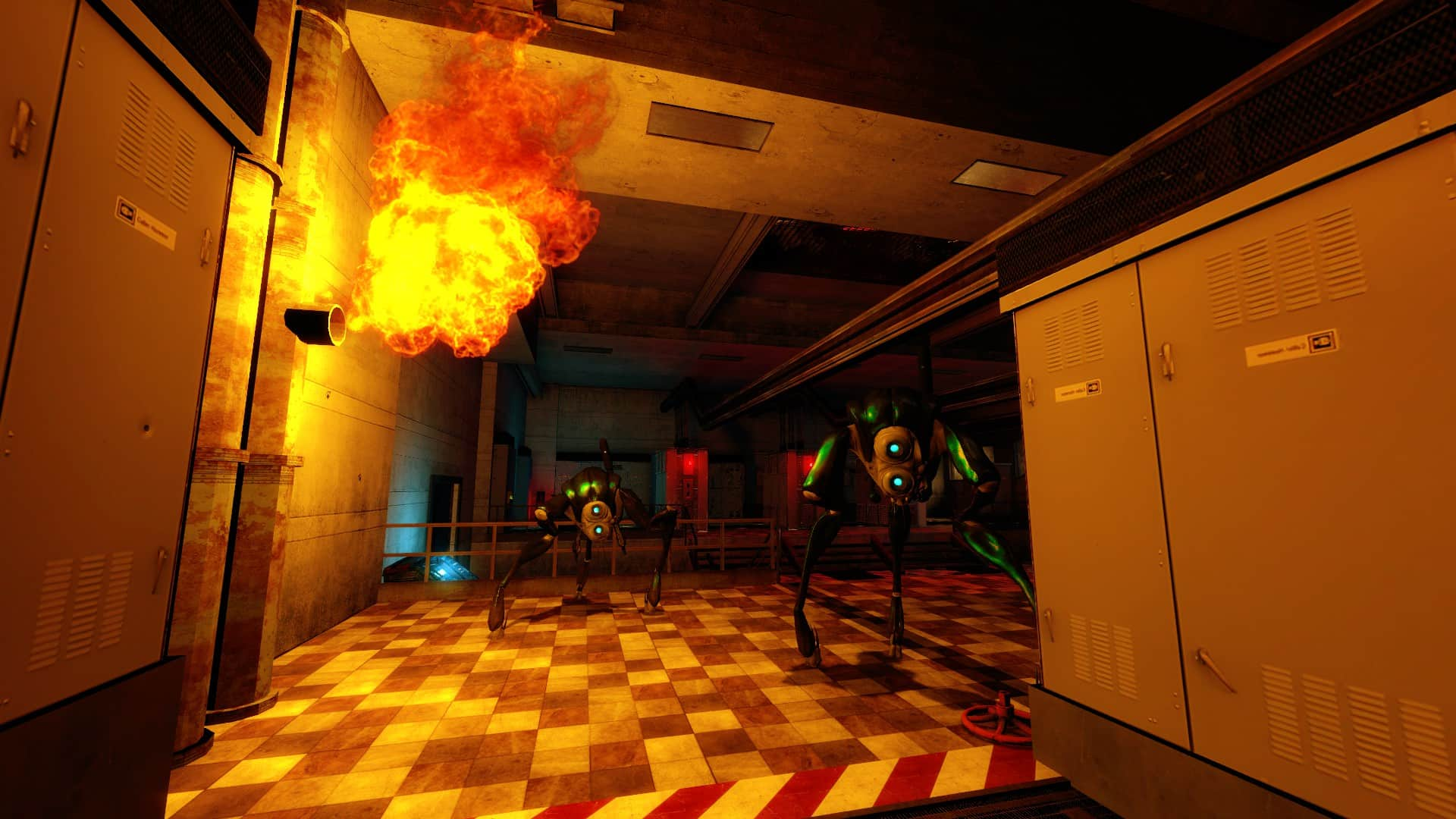
In terms of fan projects, perhaps the most notable one is Prospekt, a fan-made Half-Life 2 mod that earned the rare approval from Valve to be published on Steam as a paid standalone game.
Prospekt happens concurrently with the events of Half-Life 2’s ninth chapter, Nova Prospekt, and follows Adrian Shephard in the eponymous Combine prison facility, having been rescued by the Vortigaunts in order to help Gordon Freeman accomplish his mission.
While the standalone mod, as mentioned, got Valve’s approval to use the Half-Life IP and be sold on Steam, that doesn’t necessarily mean it is an official part of the series continuity. Coupled with the lukewarm and sometimes even hostile reception to the game, especially from the rest of the modding community at the time of release, there is no reason for Valve to actually acknowledge the game as anything more than a curiosity.
Arkane Studios’ Half-Life: Ravenholm
Rumored for years and finally acknowledged in 2020 for a Noclip documentary (see above), Half-Life: Ravenholm was a spin-off by none other than Arkane Studios, best known for the Dishonored series—which has its own ties with the Half-Life franchise in the form of their shared artist, Viktor Antonov—and the 2017 Prey reboot.
Developed between 2006 and 2007, the game was set after the events of Half-Life 2’s Ravenholm chapters, with the equally popular Father Grigori coming across “Lieutenant”[sic] Adrian Shephard, mysteriously returned to Earth, in the outskirts of Ravenholm. The two characters would team up to escape the asylum Father Grigori was holed up in, eventually making their way back to Ravenholm.
Ironically, much like Shephard’s only previous outing, Ravenholm took its own liberties with the franchise, like including headcrab-less zombies and rewriting Father Grigori as a juiced-up addict who eventually mutates into a monster of his own. Whether that was ultimately the reason for the game’s cancellation is unknown, although it’s more likely that Valve, having slowed down production on its own Episode Three, decided to pull the plug on the Half-Life franchise until they figured what they wanted to do next.
Whatever the reason, Shephard was once more relegated to obscurity, waiting for another opportunity to come back.
Why is Shephard still so popular?
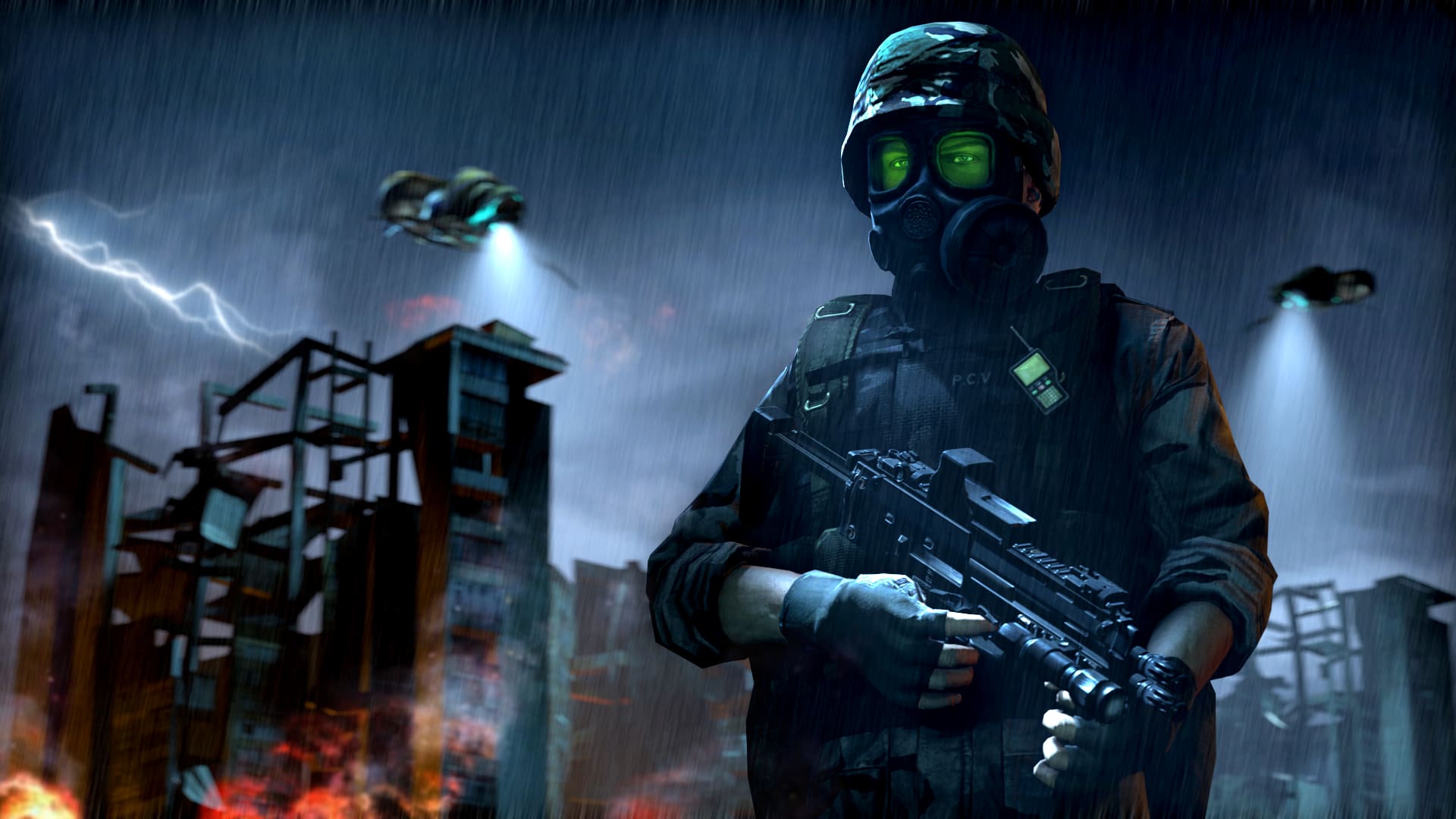
Despite Valve not seeming to be in any hurry to bring him back, Corporal Shephard continues to be the dark horse for Half-Life fans, being the focus of fan art, machinima and plenty of discussions across the Internet, more so than even most of the cast of Half-Life 2 (I certainly don’t see as much fan art for Colonel Odessa Cubbage).
Adrian Shephard has a few points in his favor, particularly the fact that he’s closest to a “traditional” videogame protagonist that the Half-Life series has. Whereas the Half-Life series intentionally diverged from the popular shooters of the time by casting a bespectacled scientist as the protagonist, Shephard is a military soldier, a far more common main character in first-person shooters—and, if the Call of Duty franchise has taught us anything, it’s that “realistic” military shooters never fall out of fashion. Plus, it doesn’t hurt that he looks cool; a similar thing happened with the Resident Evil franchise and the minor character of HUNK, another similarly mysterious, masked elite soldier whose infrequent appearances and air of mystery turned into a fan-favorite.
But even beyond that, Shephard has the added factor of being an underdog in the franchise. Both Gordon Freeman and Barney Calhoun, the two other playable characters of the first-generation Half-Life games, have made subsequent appearances in the series (whether Barney from Half-Life 2 is the same as Blue Shift’s protagonist Calhoun is a discussion for another time, but they certainly share the same name, so for our purposes, we’ll consider them the same character).
Adrian Shephard, on the other hand, hasn’t ever gotten as much as an official mention since Opposing Force—to the point that Portal’s portal device being named the “Aperture Science Handheld Portal Device”, with initials that coincidentally resemble the name “A. Shephard“, grew into such a furor with the fandom at the time that Portal’s post-game menu screen got an Easter egg referencing the character, with the keyboard seen on-screen having all the letters in Shephard’s name highlighted.
Much like the absence of an official Half-Life sequel made the stragglers that weathered its absence more rabid and loud, the lack of any further appearances by Adrian Shephard has made the character a mythical, albeit arguably somewhat divisive, figure in the eyes of fans. The community is forever split on the subject of Opposing Force’s protagonist, at least until—or, more accurately, if—Shephard is once again reintroduced into the Half-Life series in a future game. Valve has certainly noted the vocal demand, but, much like any questions about future Half-Life games, the best Adrian’s fans have gotten is vague answers from Gabe Newell that Shephard may or may not reappear in the future.
Until then, Shephard remains relegated to a canonical limbo, endlessly debated in Half-Life fan communities, simultaneously canon and non-canon. Luckily for him, both official and non-official efforts continue to be made to bring him back from the G-Man’s clutches, all but guaranteeing that he’ll remain the ultimate survivor at least in the eyes of the fandom.
References
- Half-Life Opposing Force Soldier’s Handbook (1999). November 1. Gearbox Software. Available online at: https://valvearchive.com/archive/Half-Life/Half-Life%20Opposing%20Force/Guides/Manual.pdf
- Asknoone (2006). Marc Laidlaw Vault #1. October 14. ValveTime. Available at: https://www.valvetime.co.uk/threads/marc-laidlaw-vault.114535/#post-2071111
- Barnz (2004). Marc Laidlaw Vault #148. March 22. ValveTime. Available online at: https://www.valvetime.co.uk/threads/marc-laidlaw-vault.114535/page-4#post-2910762
- SCT (2016). Prospekt. February 18. Steam. Available online at: https://store.steampowered.com/app/399120/Prospekt/
- Noclip – Video Game Documentaries (2020). The Untold Story of Arkane Studios: Dishonored / Prey / Ravenholm / LMNO / The Crossing. June 26. YouTube. Available online at: https://www.youtube.com/watch?v=h4kdqwdbZZ8

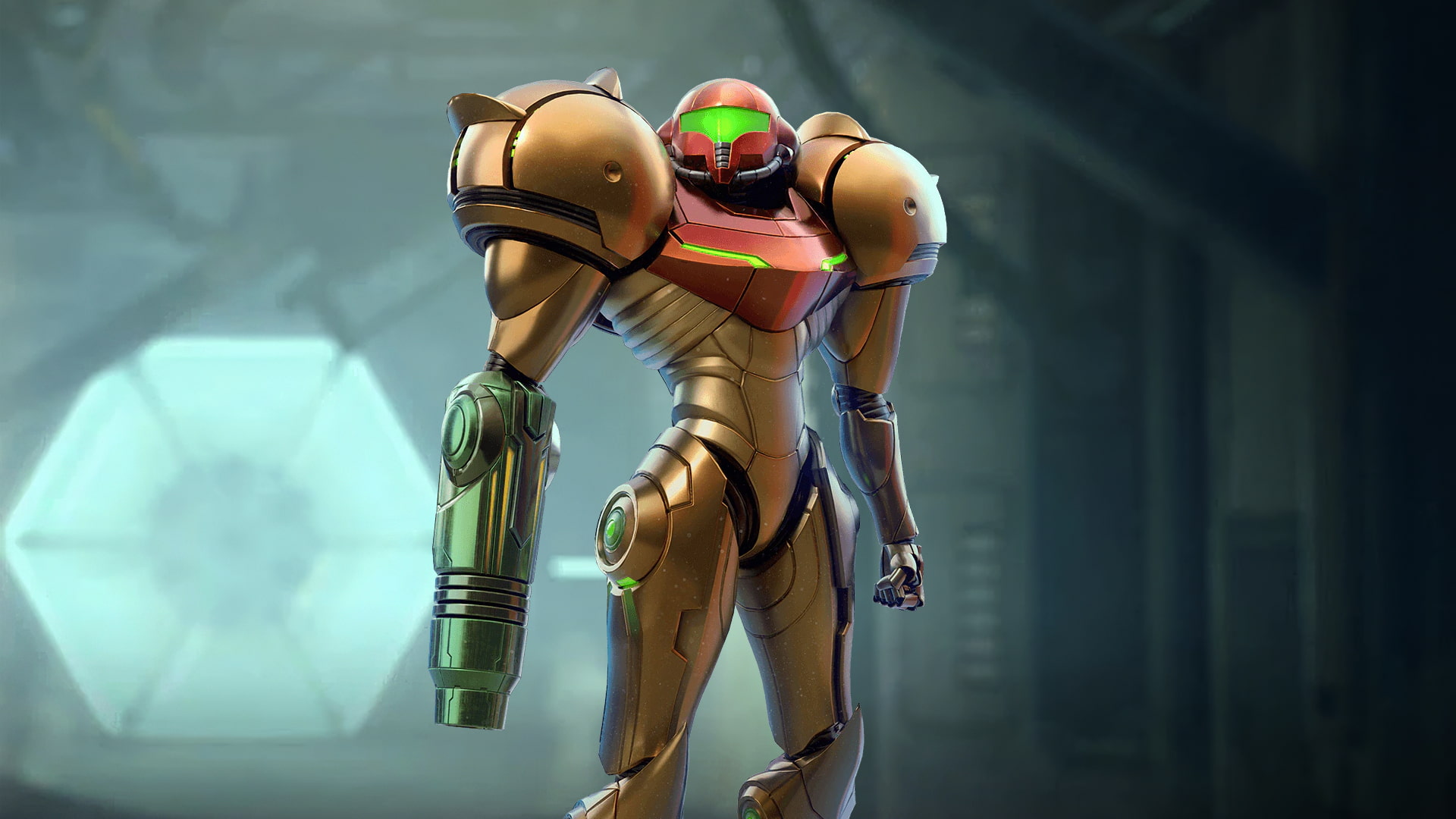
Shepard is an intriguing character, and I would love to see him in a new Half-Life game. With the end of Opposing Force, they left a possibility of continuity, and it would be a shame not to make use of it.